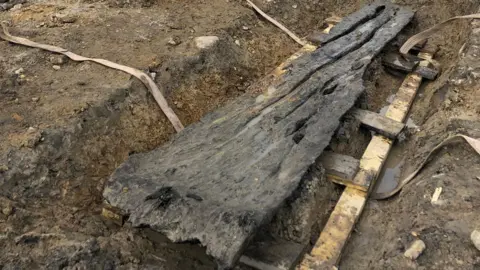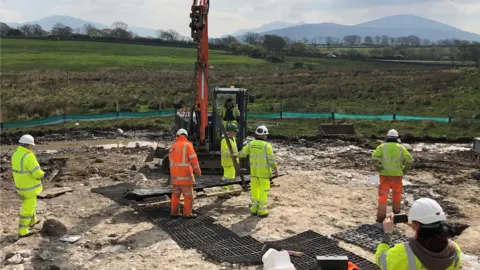Bronze Age Caernarfon bypass find 'could be canoe'
 Welsh Government
Welsh GovernmentWork on a bypass in Gwynedd has revealed the site of a Bronze Age mound which could contain an ancient canoe.
Archaeological excavation on the site of the Caernarfon-Bontnewydd bypass uncovered three troughs underneath a burnt mound dating back about 3,500 years.
Experts think one of the troughs may have been originally used as a dug-out canoe hollowed from an oak tree.
It would be the first prehistoric canoe ever found in north Wales if proven.
The timber has now been lifted from its discovery site and is being examined in more detail.
 Welsh Government
Welsh GovernmentA section of Roman road has also been excavated and has confirmed the route of the road between the Roman forts of Segontium (Caernarfon) and Canovium (Caerhun in the Conwy valley), which was previously uncertain.
Jenny Emmett, a senior planning archaeologist from Gwynedd Archaeological Planning Service, said the results had added considerably to knowledge of the area.
She said: "We are pleased with both the significance of the discoveries and the positive working relationships that have been established between all parties that have enabled the programme to proceed smoothly, and look forward to both continuing as the scheme progresses."
An early medieval industrial site dating back to the 8th Century has also been identified during the work.
Work is continuing on the construction of the bypass, which due to finish in April 2021 and is not affected by the findings.
On Saturday, campaigners expressed fears work on the bypass could mean a 15th century medieval well could be lost.
